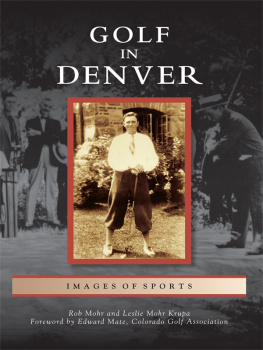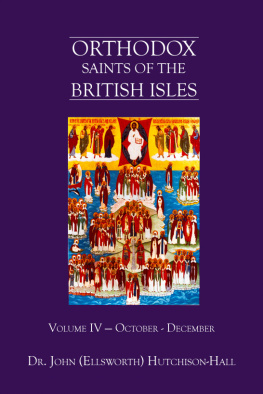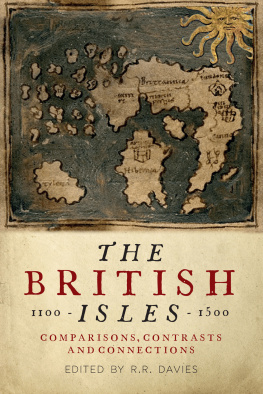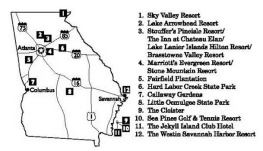Bernard Darwin - The Golf Courses of the British Isles
Here you can read online Bernard Darwin - The Golf Courses of the British Isles full text of the book (entire story) in english for free. Download pdf and epub, get meaning, cover and reviews about this ebook. year: 1910, publisher: CreateSpace Publishing, genre: Detective and thriller. Description of the work, (preface) as well as reviews are available. Best literature library LitArk.com created for fans of good reading and offers a wide selection of genres:
Romance novel
Science fiction
Adventure
Detective
Science
History
Home and family
Prose
Art
Politics
Computer
Non-fiction
Religion
Business
Children
Humor
Choose a favorite category and find really read worthwhile books. Enjoy immersion in the world of imagination, feel the emotions of the characters or learn something new for yourself, make an fascinating discovery.

- Book:The Golf Courses of the British Isles
- Author:
- Publisher:CreateSpace Publishing
- Genre:
- Year:1910
- Rating:5 / 5
- Favourites:Add to favourites
- Your mark:
- 100
- 1
- 2
- 3
- 4
- 5
The Golf Courses of the British Isles: summary, description and annotation
We offer to read an annotation, description, summary or preface (depends on what the author of the book "The Golf Courses of the British Isles" wrote himself). If you haven't found the necessary information about the book — write in the comments, we will try to find it.
The Golf Courses of the British Isles — read online for free the complete book (whole text) full work
Below is the text of the book, divided by pages. System saving the place of the last page read, allows you to conveniently read the book "The Golf Courses of the British Isles" online for free, without having to search again every time where you left off. Put a bookmark, and you can go to the page where you finished reading at any time.
Font size:
Interval:
Bookmark:

BRITISH ISLES
ST. ANDREWS
OF THE
BRITISH ISLES
DUCKWORTH & CO.
3 HENRIETTA STREET, COVENT GARDEN
Published 1910
| Page | |
| I. | London Courses (1) |
| II. | London Courses (2) |
| III. | Kent and Sussex |
| IV. | The West and South-West |
| V. | East Anglia |
| VI. | The Courses of Cheshire and Lancashire |
| VII. | Yorkshire and the Midlands |
| VIII. | Oxford and Cambridge |
| IX. | A London Course |
| X. | St. Andrews, Fife, and Forfarshire |
| XI. | The Courses of the East Lothian and Edinburgh |
| XII. | West of Scotland: Prestwick and Troon |
| XIII. | Ireland |
| XIV. | Wales |
| Index |
| St. Andrews | . |
| Sunningdale | To face p. |
| Walton Heath | |
| Woking | |
| Mid-Surrey | |
| Stoke Poges | |
| Cassiobury Park | |
| Sandy Lodge | |
| Northwood | |
| Romford | |
| Blackheath | |
| Wimbledon Common | |
| Mitcham Common | |
| Sandwich | |
| Sandwich (Hades) | |
| Deal | |
| Princes | |
| Littlestone | |
| Rye | |
| Eastbourne | |
| Ashdown Forest | |
| Westward Ho! | |
| Bude | |
| Burnham | |
| Broadstone | |
| Bournemouth | |
| Bembridge | |
| Felixstowe | |
| Cromer | |
| Sheringham | |
| Brancaster | |
| Hunstanton | |
| Skegness | |
| Hoylake (1) | |
| Hoylake (2) | |
| Formby | |
| Wallasey | |
| Lytham and St. Annes | |
| Trafford Park | |
| Ganton | |
| Fixby | |
| Hollinwell | |
| Sandwell Park | |
| Handsworth | |
| Frilford Heath | |
| Worlington | |
| St. Andrews | |
| Carnoustie | |
| Gullane | |
| Muirfield | |
| North Berwick | |
| Musselburgh | |
| Barnton | |
| Prestwick | |
| Troon | |
| Dollymount | |
| Portmarnock (1) | |
| Portmarnock (2) | |
| Portrush | |
| Newcastle | |
| Aberdovey | |
| Harlech | |
| Porthcawl | |
| Southerndown |
LONDON COURSES (1).
Font size:
Interval:
Bookmark:
Similar books «The Golf Courses of the British Isles»
Look at similar books to The Golf Courses of the British Isles. We have selected literature similar in name and meaning in the hope of providing readers with more options to find new, interesting, not yet read works.
Discussion, reviews of the book The Golf Courses of the British Isles and just readers' own opinions. Leave your comments, write what you think about the work, its meaning or the main characters. Specify what exactly you liked and what you didn't like, and why you think so.









